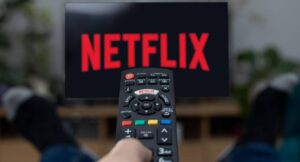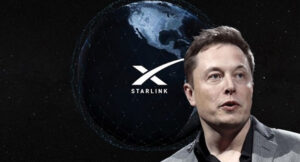Consumers have subscribed to multiple streaming platforms, but often struggle to keep track of new releases, missing several shows that they may be interested in. In this backdrop, cross-platform recommendation engines are set to gain in popularity, as consumers demand a better search experience to find content across OTT apps.
On average, consumers juggle three to four paid streaming subscriptions, and nearly 50% express frustration with finding content across these services, as per Deloitte’s Digital Media Trends Survey. Globally, several types of cross-platform recommendation engines are gaining traction. These platforms, like Reelgood and JustWatch, aggregate content from numerous streaming services and build recommendation algorithms that work across a unified catalogue.
New premium real estate in streaming
In fact, the common user interface will be the new premium real estate on digital platforms, particularly on connected TVs (CTVs or internet-enabled TV), and could drive carriage and placement revenues in the medium term as platforms struggle for profitability, according to the latest Ficci EY report.
This would require a strategy that goes beyond bundling, or offering multiple apps together for a discounted price. Entertainment industry experts say cross-platform recommendation engines that are emerging as a fix, track user behaviour across multiple services, offering unified recommendations. Big tech companies are leading the charge, leveraging their data ecosystems to power multi-platform insights. Independent data intelligence companies are also playing a pivotal role, offering APIs (application programming interfaces) and metadata solutions that connect disparate platforms. These engines bridge the gap between siloed platforms, helping users navigate the fragmented OTT space.
Challenges in content discovery
“With over 40 OTT platforms catering to diverse linguistic and regional audiences, users often struggle to find content that aligns with their tastes. That’s where aggregators come in, they act as one-stop content discovery hubs, reducing the friction of app-hopping by offering a unified recommendation layer. Beyond aggregators, telecom giants and connected TV are integrating AI-powered recommendation engines at the device level, influencing user behaviour by suggesting content even before users open an app. This makes the entire experience feel more intuitive and seamless,” said Saurabh Srivastava, chief operating officer, digital business, Shemaroo Entertainment Ltd.
OTT platforms today face a discovery overload, thanks to too much content, but limited ways to discover what’s relevant, said Russhabh R. Thakkar, founder and CEO, Frodoh, an ad tech company. Algorithms often prioritize trending content over personalized recommendations, leaving smaller titles buried. This problem has grown bigger, as platforms rapidly expand libraries without parallel innovation in discovery tech.
Future of OTT discovery, personalization
Kavita Shenoy, CEO, Voiro, an ad operations and revenue analytics platform, pointed out that while some series release content in tranches, today, the audience either waits for a season to drop completely or watches it asynchronously and not at an appointed time, making it difficult for recommendation engines to understand viewership and content consumption behaviour.
Additionally, the rise of addictive short-form video content has significantly altered user attention spans. Streaming TV has normalised behaviours like skipping and skimming content and fragmented viewing, further complicating the task of recommendation algorithms, she emphasized.
“With smart TVs aggregating content from different apps, recommendation engines can now pull data from multiple sources to create a seamless viewing experience. This aggregated interface becomes the perfect canvas for cross-platform recommendation engines to thrive. Additionally, the rise of family co-viewing on CTVs means recommendations must now cater to group preferences, pushing platforms to rethink their algorithms. CTV also opens up deeper personalization possibilities through richer data—such as time-of-day usage patterns, viewing durations, and real-time context,” Thakkar said.
To be sure, the future of OTT discovery lies in smarter, more seamless solutions that prioritize viewer experience over platform boundaries, according to entertainment industry experts.
Smarter search, seamless discovery
Phanimohan Kalagara, chief technology officer, Gracenote, the content data business unit of Nielsen, said that a key step forward is the development of universal content registries that index availability across services, paired with standardized metadata frameworks to create a more cohesive and intuitive search experience. “Voice-powered search, enhanced with natural language understanding, will further reduce friction—allowing users to make contextual queries like ‘show me something funny’ or ‘find action movies with female leads’.”
Beyond traditional genres, mood and theme-based discovery will align recommendations with viewers’ emotions and preferences, making content discovery more intuitive, Kalagara said. Personalized content feeds, aggregated across multiple platforms through unified viewer profiles, will streamline recommendations, ensuring users spend less time searching and more time watching, he added.
Avinash Mudaliar, CEO, OTTPlay, the recommendation and content discovery platform for streaming services launched by HT Media Labs (part of the same organization as Mint) said OTTPlay provides a unified platform where users can see movies and shows available across their various subscriptions in one place. It operates on an AI-based recommendation engine which captures its users’ watch patterns, likes, dislikes and clubs it to deliver a personalised recommendation engine.
“In today’s fiercely-competitive OTT landscape, while content remains paramount, it is the viewers who ultimately determine its success. Viewers expect services that understand their consumption habits, including time spent, preferred viewing times, language preferences, and content choices such as genres and favourite actors,” said Devyani Ozarde, managing director and lead – media and entertainment, Accenture in India. “With AI-powered advancements, original equipment manufacturers (OEMs) can now offer superior cross-platform content discovery, catering to users who often subscribe to multiple providers. Connected TV OEMs are at the forefront with data and AI-powered recommendations and voice-based search, significantly reducing search time.” LiveMint







